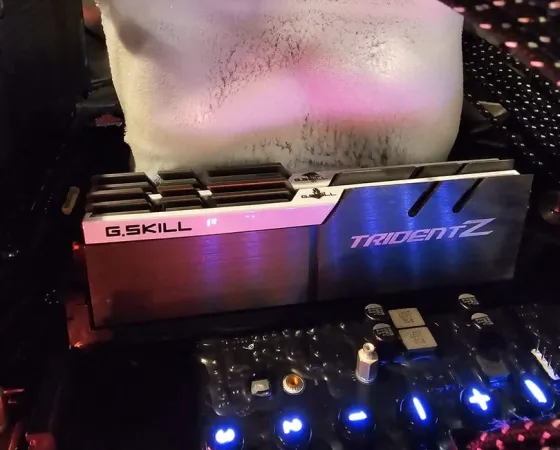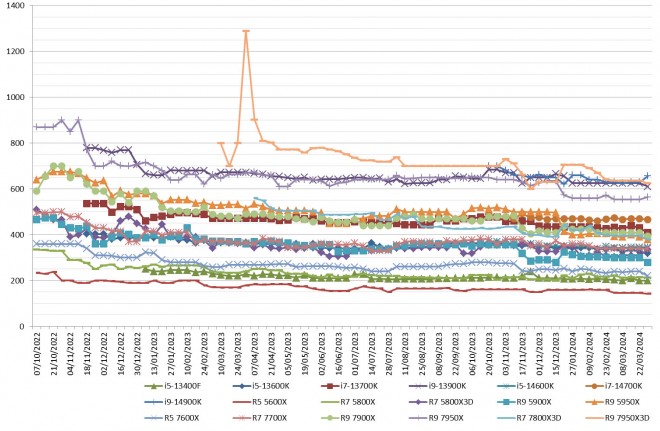Earlier this week the Washington Post reported that America's Defense department "is growing concerned that the United Launch Alliance, one of its key partners in launching national security satellites to space, will not be able to meet its needs to counter China and build its arsenal in orbit with a new rocket that ULA has been developing for years."
In a letter sent Friday to the heads of Boeing's and Lockheed Martin's space divisions, Air Force Assistant Secretary Frank Calvelli used unusually blunt terms to say he was growing "concerned" with the development of the Vulcan rocket, which the Pentagon intends to use to launch critical national security payloads but which has been delayed for years. ULA, a joint venture of Boeing and Lockheed Martin, was formed nearly 20 years ago to provide the Defense Department with "assured access" to space. "I am growing concerned with ULA's ability to scale manufacturing of its Vulcan rocket and scale its launch cadence to meet our needs," he wrote in the letter, a copy of which was obtained by The Washington Post. "Currently there is military satellite capability sitting on the ground due to Vulcan delays...."
ULA originally won 60 percent of the Pentagon's national security payloads under the current contract, known as Phase 2. SpaceX won an award for the remaining 40 percent, but it has been flying its reusable Falcon 9 rocket at a much higher rate. ULA launched only three rockets last year, as it transitions to Vulcan; SpaceX launched nearly 100, mostly to put up its Starlink internet satellite constellation. Both are now competing for the next round of Pentagon contracts, a highly competitive procurement worth billions of dollars over several years. ULA is reportedly up for sale; Blue Origin is said to be one of the suitors...
In a statement to The Post, ULA said that its "factory and launch site expansions have been completed or are on track to support our customers' needs with nearly 30 launch vehicles in flow at the rocket factory in Decatur, Alabama." Last year, ULA CEO Tory Bruno said in an interview that the deal with Amazon would allow the company to increase its flight rate to 20 to 25 a year and that to meet that cadence it was hiring "several hundred" more employees. The more often Vulcan flies, he said, the more efficient the company would become. "Vulcan is much less expensive" than the Atlas V rocket that the ULA currently flies, Bruno said, adding that ULA intends to eventually reuse the engines. "As the flight rate goes up, there's economies of scale, so it gets cheaper over time. And of course, you're introducing reusability, so it's cheaper. It's just getting more and more competitive."
The article also notes that years ago ULA "decided to eventually retire its workhorse Atlas V rocket after concerns within the Pentagon and Congress that it relied on a Russian-made engine, the RD-180. In 2014, the company entered into a partnership with Jeff Bezos' Blue Origin to provide its BE-4 engines for use on Vulcan. However, the delivery of those engines was delayed for years — one of the reasons Vulcan's first flight didn't take place until earlier this year."
The article says Cavelli's letter cited the Pentagon's need to move quickly as adversaries build capabilities in space, noting "counterspace threats" and adding that "our adversaries would seek to deny us the advantage we get from space during a potential conflict."
"The United States continues to face an unprecedented strategic competitor in China, and our space environment continues to become more contested, congested and competitive."


Read more of this story at Slashdot.
 Dans le monde de l'overclocking extrême, le benchmark de mémoire vive qui a le vent en poupe en ce moment est PYPrime, que ce soit en mode 2B ou 32B. Les adeptes de records vont ainsi comme toujours valider leurs records sur HWBOT et jusqu'à cette semaine c'était l'incontournable safedisk qui posséd...
Dans le monde de l'overclocking extrême, le benchmark de mémoire vive qui a le vent en poupe en ce moment est PYPrime, que ce soit en mode 2B ou 32B. Les adeptes de records vont ainsi comme toujours valider leurs records sur HWBOT et jusqu'à cette semaine c'était l'incontournable safedisk qui posséd... La plateforme AMD AM5 compte officiellement deux nouveaux processeurs dans ses rangs, ça y est. Nous parlons bien entendu des Ryzen 7 8700F et Ryzen 5 8400F, dont nous vous avons parlé assez longuement les 12 avril puis 27 avril 2024. Nous n'allons pas revenir en long en large et en travers sur les...
La plateforme AMD AM5 compte officiellement deux nouveaux processeurs dans ses rangs, ça y est. Nous parlons bien entendu des Ryzen 7 8700F et Ryzen 5 8400F, dont nous vous avons parlé assez longuement les 12 avril puis 27 avril 2024. Nous n'allons pas revenir en long en large et en travers sur les...
 Vous avez un petit budget mais rêvez d'un écran gaming d'une diagonale de 27 pouces, avec une définition QHD (2560 x 1440 pixels), réactif bien entendu et doté d'une dalle IPS ? On arrive généralement à en dégoter juste sous la barre des 200 € avec un peu de patience lors d'offres ponctuelles mais l...
Vous avez un petit budget mais rêvez d'un écran gaming d'une diagonale de 27 pouces, avec une définition QHD (2560 x 1440 pixels), réactif bien entendu et doté d'une dalle IPS ? On arrive généralement à en dégoter juste sous la barre des 200 € avec un peu de patience lors d'offres ponctuelles mais l...